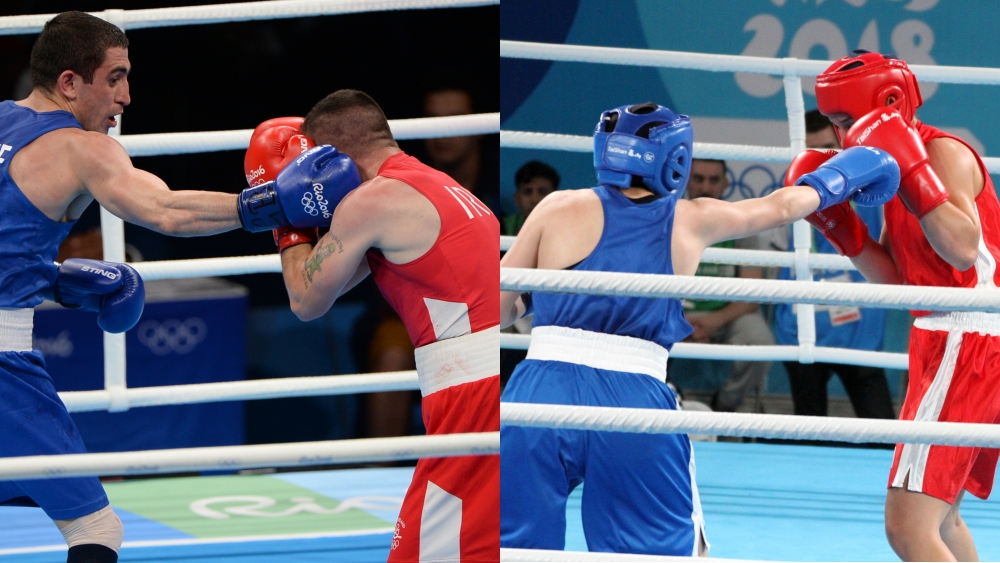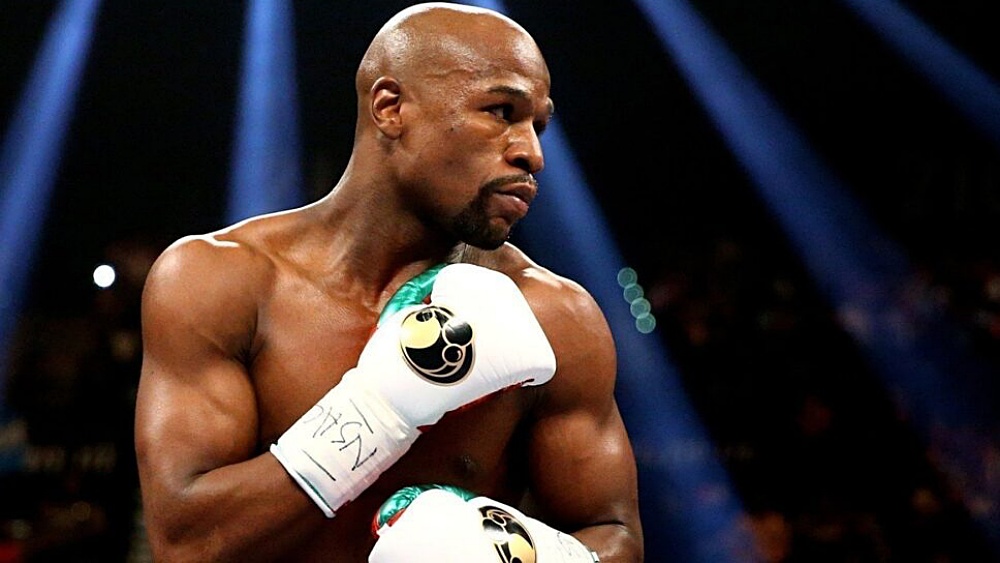There are a myriad of fighting styles in boxing, from the evasive Philly Shell style Floyd Mayweather uses to the aggressive Peekaboo style of Mike Tyson. Regardless of their individual style, skilled boxers share one commonality, ring IQ. Ring IQ is a fighter’s ability to craft and execute a game plan in the boxing ring that suits their skills and stifles their opponents. Today Evolve is pleased to share a guide on how to develop ring IQ for boxing.
Tall Build
The first step in developing ring IQ is to find your boxing style. When crafting your boxing style, consider what natural physical attributes and gifts you have. If you are tall for your weight with long arms, you may want to develop a boxing style centered around your jab and keeping opponents at a distance. The next step to developing your style is to identify and nurture any innate gifts you have as a boxer. Let’s take a look at some of boxing’s tall fighters and how they utilize their height advantage.
Thomas Hearns
For example, if you are blessed with a devastating right hand that crumples your opponents, you will want to craft your boxing style around that punch. An example of this type of fighter is the legendary Thomas “ The Hitman “ Hearns. He possessed a chopping rear cross that few boxers could endure. His boxing style was built around this; he would use a whipping flicker jab to frustrate opponents and goad them into charging into range – only to be met with a dynamite chopping cross. Although Hearns used a simple style, he was able to execute it effectively in the ring against a myriad of opponents. Above is a highlight reel of Thomas “ The Hitman “ Hearns. Tall fighters with an abundance of natural knockout power can emulate his style to great effect.
Wladimir Klitschko
For taller fighters that lack the one-punch knockout power that Hearns possessed, look to Wladamir Klitschko for inspiration. Although Klitschko possessed a powerful straight right, he preferred to fight from long range, heavily utilizing jabs and lead hooks while keeping his head far away from his opponent. Klitschko’s stance was bladed more than a traditional boxing stance, giving his lead hand maximum reach. This narrow stance also allowed Klitschko quick movement forwards and backwards but limited his lateral movement. Whenever his opponent attempted to close distance, he was able to dart out of range due to his stance, often peppering his opponent with jabs as he exited range. Check out the above highlight reel of Wladamir Klitschko for further inspiration.
If you are a taller fighter with light and agile feet, you may want to emulate part of Tyson “ The Gypsy King “ Fury’s boxing style. Although Fury is an extremely tall boxer, close to seven feet tall, his style revolves around his footwork. He can move with the speed of a boxer less than half his weight, and stay balanced and composed while doing so. The speed and fluidity of his footwork allow him to switch stances at will while shifting his weight and head between his feet to evade punches thrown at him.
Short Build
The same steps can be used to craft your own boxing style if you are short for your weight class. Although this can be disadvantageous when fighting at range, shorter boxers are able to produce much more leverage on their punches from the inside.
An example of this type of fighter is the legendary “ Iron “ Mike Tyson. Tyson uses the peekaboo style, which uses shifting footwork and stance switches, to close distance quickly. Once on the inside, he is able to deliver a flurry of devastating punches. Check out the above video showcasing Tyson and the peekaboo style. To make this style effective, you must be athletic and have explosive power.
Willie Pep
Shorter boxers who do not possess one-punch knockout power should study the style of Willie “ Will O Wisp “ Pep. Pep is considered one of, if not the, greatest boxers of all time – with only a 28% knockout ratio. Pep did not have the explosiveness that Tyson had; he relied on footwork that created angles while switching stances. Above are videos that showcase Pep’s otherworldly footwork and delve deeper into his style of boxing.
If you are a shorter boxer with quick feet, look to Manny Pacquiao for inspiration. Pacquiao moved up an unprecedented eight weight classes, winning championship belts in each, all thanks to his ability to apply effective footwork. His agile footwork allowed Pacquiao to take unexpected angles and land a punch before his opponents could react. Above is a video showcasing the legendary Manny Pacquiao.
The best footwork patterns to train will depend on your individual style. A taller fighter may benefit from the pendulum footwork of the Soviet Boxing system, while a shorter fighter may be more effective using footwork from the Peekaboo or Cuban boxing styles. Don’t be afraid to try a variety of different footwork patterns. Some shorter fighters can use the pendulum step from the Soviet-style very effectively. Let’s take a look at two boxers that utilize effective footwork.
Oleksandr Usyk is an example of this. Although he is relatively short for his weight class, he constantly pendulum steps, throwing off his opponent’s distance and timing.
Guillermo Rigondeaux
https://www.youtube.com/watch?v=QbYIX86ESN8
Footwork does not have to be flashy to be effective. Basic footwork, executed with proper timing, will put you in a better position than your opponent with less effort. A perfect example of this is the duck and pivot that Guillermo Rigondeaux often uses. Rigondeaux, a southpaw boxer, nullifies the advantage of the coveted outside foot position in an open stance matchup by simply ducking and pivoting inside as his opponent steps to his outside. This resets both of their stances and gives him a split second to punch before his opponent can fully turn to face him.
Regardless of the footwork patterns you decide to train, it is important not to rush. Practicing anything in boxing should start slow, to build proper form and technique. A well-known adage in boxing circles is that slow equals smooth, and smooth equals fast. Once you are comfortable with a technique, you can easily speed it up.
Setting Traps
An important aspect of ring IQ for boxing is the ability to set traps for your opponent. This means luring your opponent into doing something that you want them to do, then reacting off of their action. For example, you can condition your opponent to parry your jab with their rear hand by throwing it right between their gloves. After doing this a few times, they will react to a jab like motion with a parry – leaving the side of their head exposed for a lead hook. You can feint, or fake, a jab, then throw a lead hook knowing that it will land flush and not be blocked. This type of trap is sometimes referred to as punching from different angles. Over the course of a fight, the opponent will get mentally and physically fatigued from having to guess the angle of your lead hand.
Another classic trap is the jab to the body, followed by a rear overhand. You can set this trap by throwing body jabs at your opponent. Over time, they will associate you changing levels with blocking a body jab, often lowering their guard in the process. This level change also serves to load your hips to deliver a devastating rear overhand that goes right over their guard. Canelo Alvarez used this exact setup to knockout Amir Khan in their fight.
There are thousands of potential traps you can set up with different combinations of punches and footwork. This is part of why boxers can spend years and years training and still have more to learn.
Educated Jab
https://www.youtube.com/watch?v=5dgwlDKCdA4
An educated jab is arguably the most important aspect of developing ring IQ for boxing. The jab is the safest punch to throw as it requires the least amount of weight shift and commitment. It can be used to blind and damage opponents as you make reads. Making reads is when you figure out the elements of your opponent’s boxing style in real time as you fight. This can be difficult in the moment, due to the inherent pressures of combat; being comfortable with using your jab can ease some of that pressure. You can even draw out and nullify your opponent’s dominant position by using your jab combined with footwork. Check out the above video breakdown of Pernell “ Sweet Pea “ Whitaker’s highly cerebral boxing style. Whitaker used the jab as the foundation for his entire game and is known as one of the craftiest boxers of all time.
Conclusion
Ring IQ for boxing is a deep science that can take many forms. Much of it is dependent on your individual boxing style and preference. There is so much you can train and only so much time, so it is wise to craft your training to build an effective style. We hope the concepts and tips discussed above can help you in developing your ring IQ for boxing!
You may also like:
These Are The Essential Drills To Improve Your Shadowboxing Technique

















